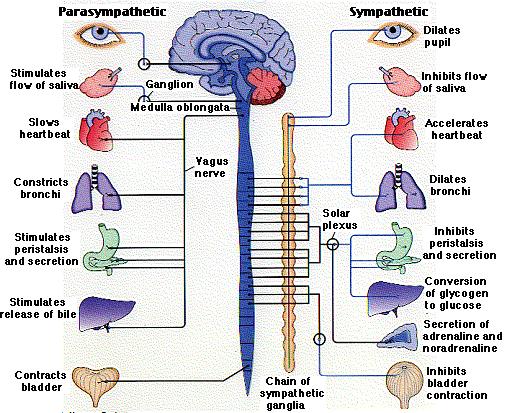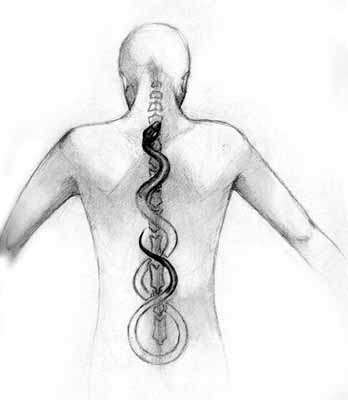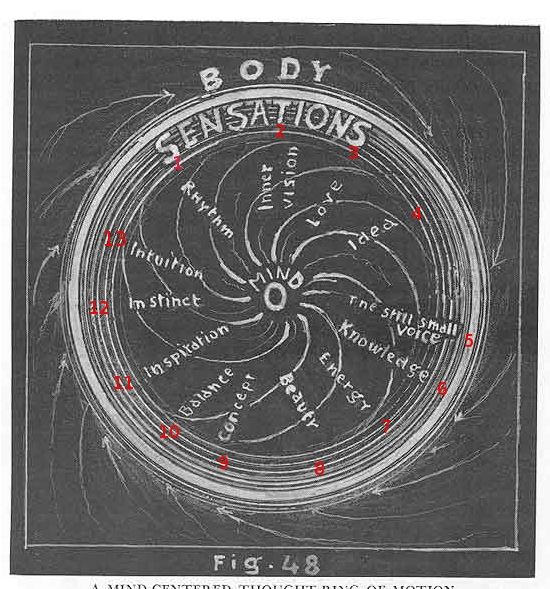so we discussed a bit "the colony bee collapse disorder" ..... Bees and flowers communicate using electrical fields, researchers discover ...... let's look at a different kind of Bee :
Stayin' Alive - Bee Gees (lyrics) - YouTube

Male fertility: Countdown | The Economist

+
Psychosomatic medicine: Think yourself well | The Economist
hence the respiration exercise taught in Yoga


+
from: http://www.energeticforum.com/211036-post3268.html

Pixie Dust Healing: Vagus Nerve and the 7 Chakras .... Abba - Take A Chance On Me - YouTube


The bees entered the hive through a hole in a carved flower crafted by the chapel's master stone masons
a rose is a medieval symbol for vagina

Male fertility: Countdown | The Economist
Male fertility
Countdown
Yet another study suggests sperm numbers are falling in rich countries
Dec 8th 2012 |From the print edition
AS HEALTH scares go, the idea that sperm counts are plummeting across the industrialised world, probably as a result of chemical pollution that has an adverse hormonal effect, takes some beating. In 1992 a meta-analysis of 61 papers, published in the British Medical Journal, suggested they had fallen by half in the preceding half-century, from 113m per millilitre of semen to 66m. Since then, the decline has apparently continued. The most recent paper, just published in Human Reproduction, by Joëlle le Moal, Matthieu Rolland and their colleagues at France’s Institute for Public Health Surveillance, is also one of the most comprehensive yet.
Its conclusions are stark. The sperm count of the average Frenchman, say the researchers, fell by 32.2% between 1989 and 2005. At the same time, the proportion of properly formed sperm also fell, from 60.9% to 52.8%.
This paper is an important contribution to a lively debate. For although the idea of falling sperm counts has entered the public mind as an established fact, fertility experts remain divided about just how big the effect really is. Not all studies have found drops. Though one of Parisians in 1995 suggested that counts were indeed falling, by about 2.1% a year, another, carried out in Toulouse, suggested that they weren’t.
The new study is bigger than most (it involved more than 26,000 men, drawn from 126 fertility clinics all over France), and is notable for its attention to detail. The researchers examined only men whose partners were being treated for infertility—a cunning way around one problem with sperm studies, which is that, because it is difficult to recruit from the general population, researchers often have to rely on couples attending fertility clinics, and are thus dealing with men who, by definition, are much more likely to have low sperm counts.
Even so, not everyone is convinced. Allan Pacey, an andrologist at the University of Sheffield, in England, thinks much of the effect could be caused by changes in how sperm quality is measured. He points out that the World Health Organisation’s manual on the subject has been revised four times since it was first published in 1980, and that quality control at fertility clinics has improved dramatically over the same period.
There is support for his position from other studies. One, a continuing investigation of Danish conscripts, is notable for having been established with a consistent method of measurement from the start. Its data show no changes over the years. And Dr Rolland and Dr le Moal admit that, despite the apparent drop in sperm counts they found, there was no increase in the number of infertile men during the period of their study.
All this is not to deny that there may be a problem. Even if methodological changes account for some of the observed drop in semen quality, they may not account for all of it. Dr Pacey points out that there is separate evidence suggesting the incidences of testicular cancer, and of genital abnormalities in boys, are both rising. That is consistent with the idea that something out there actually is monkeying with masculinity.
Countdown
Yet another study suggests sperm numbers are falling in rich countries
Dec 8th 2012 |From the print edition
AS HEALTH scares go, the idea that sperm counts are plummeting across the industrialised world, probably as a result of chemical pollution that has an adverse hormonal effect, takes some beating. In 1992 a meta-analysis of 61 papers, published in the British Medical Journal, suggested they had fallen by half in the preceding half-century, from 113m per millilitre of semen to 66m. Since then, the decline has apparently continued. The most recent paper, just published in Human Reproduction, by Joëlle le Moal, Matthieu Rolland and their colleagues at France’s Institute for Public Health Surveillance, is also one of the most comprehensive yet.
Its conclusions are stark. The sperm count of the average Frenchman, say the researchers, fell by 32.2% between 1989 and 2005. At the same time, the proportion of properly formed sperm also fell, from 60.9% to 52.8%.
This paper is an important contribution to a lively debate. For although the idea of falling sperm counts has entered the public mind as an established fact, fertility experts remain divided about just how big the effect really is. Not all studies have found drops. Though one of Parisians in 1995 suggested that counts were indeed falling, by about 2.1% a year, another, carried out in Toulouse, suggested that they weren’t.
The new study is bigger than most (it involved more than 26,000 men, drawn from 126 fertility clinics all over France), and is notable for its attention to detail. The researchers examined only men whose partners were being treated for infertility—a cunning way around one problem with sperm studies, which is that, because it is difficult to recruit from the general population, researchers often have to rely on couples attending fertility clinics, and are thus dealing with men who, by definition, are much more likely to have low sperm counts.
Even so, not everyone is convinced. Allan Pacey, an andrologist at the University of Sheffield, in England, thinks much of the effect could be caused by changes in how sperm quality is measured. He points out that the World Health Organisation’s manual on the subject has been revised four times since it was first published in 1980, and that quality control at fertility clinics has improved dramatically over the same period.
There is support for his position from other studies. One, a continuing investigation of Danish conscripts, is notable for having been established with a consistent method of measurement from the start. Its data show no changes over the years. And Dr Rolland and Dr le Moal admit that, despite the apparent drop in sperm counts they found, there was no increase in the number of infertile men during the period of their study.
All this is not to deny that there may be a problem. Even if methodological changes account for some of the observed drop in semen quality, they may not account for all of it. Dr Pacey points out that there is separate evidence suggesting the incidences of testicular cancer, and of genital abnormalities in boys, are both rising. That is consistent with the idea that something out there actually is monkeying with masculinity.

+
Psychosomatic medicine: Think yourself well | The Economist
THE link between mind and body is terrain into which many medical researchers, fearing ridicule, dare not tread. But perhaps more should do so. For centuries, doctors have recognised the placebo effect, in which the illusion of treatment, such as pills without an active ingredient, produces real medical benefits. More recently, respectable research has demonstrated that those who frequently experience positive emotions live longer and healthier lives. They have fewer heart attacks, for example, and fewer colds too.
Dr Fredrickson and Dr Kok concentrated their attentions on the vagus nerve. This nerve (illustrated right, in an early anatomical drawing) starts in the brain and runs, via numerous branches, to several thoracic and abdominal organs including the heart. Among its jobs is to send signals telling that organ to slow down during moments of calm and safety.
How effectively the vagus nerve is working can be tracked by monitoring someone’s heart rate as he breathes in and out. Healthy vagal function is reflected in a subtle increase in heart rate while breathing in and a subtle decrease while breathing out. The difference yields an index of vagal tone, and the value of this index is known to be connected with health. Low values are, for example, linked to inflammation and heart attacks.
read more
How effectively the vagus nerve is working can be tracked by monitoring someone’s heart rate as he breathes in and out. Healthy vagal function is reflected in a subtle increase in heart rate while breathing in and a subtle decrease while breathing out. The difference yields an index of vagal tone, and the value of this index is known to be connected with health. Low values are, for example, linked to inflammation and heart attacks.
read more


+
from: http://www.energeticforum.com/211036-post3268.html
Penis Size Matters in Bed 

 keep in mind Red Chakra
keep in mind Red Chakra


 keep in mind Red Chakra
keep in mind Red Chakra
The female orgasm
Both penis size and female orgasm are hot-button topics. There is still scientific debate about whether vaginal and clitoral orgasms are different phenomena. Different nerves carry signals from the vagina and from the clitoris, Komisaruk said, and stimulation of each activates different brain regions. But some researchers argue that vaginal stimulation is simply activating a different, internal, section of the clitoris. Women report different sensations from vaginal and clitoral orgasms, Komisaruk said, but which one women prefer largely comes down to personal preference.
In some cases, female orgasm is even more complex. For example, Beverly Whipple, professor emerita at Rutgers University and one of the discoverers of the G spot, a sensitive area felt through the front wall of the vagina, has found that women with complete spinal cord injuries can sometimes experience orgasm, even though the nerves that carry sensation up the spinal cord from the pelvis have been severed. It's likely that the sensory vagus nerve, which runs in the abdomen but bypasses the spinal cord, is recruited to carry signals to the brain in these cases, Whipple told LiveScience.
Other research has found that abdominal exercises induce orgasm in some women, resulting in pleasurable spasms at the gym.
Both penis size and female orgasm are hot-button topics. There is still scientific debate about whether vaginal and clitoral orgasms are different phenomena. Different nerves carry signals from the vagina and from the clitoris, Komisaruk said, and stimulation of each activates different brain regions. But some researchers argue that vaginal stimulation is simply activating a different, internal, section of the clitoris. Women report different sensations from vaginal and clitoral orgasms, Komisaruk said, but which one women prefer largely comes down to personal preference.
In some cases, female orgasm is even more complex. For example, Beverly Whipple, professor emerita at Rutgers University and one of the discoverers of the G spot, a sensitive area felt through the front wall of the vagina, has found that women with complete spinal cord injuries can sometimes experience orgasm, even though the nerves that carry sensation up the spinal cord from the pelvis have been severed. It's likely that the sensory vagus nerve, which runs in the abdomen but bypasses the spinal cord, is recruited to carry signals to the brain in these cases, Whipple told LiveScience.
Other research has found that abdominal exercises induce orgasm in some women, resulting in pleasurable spasms at the gym.
Brody holds a different view, pointing to studies finding that the ability to orgasm with vaginal stimulation alone is correlated with better psychological functioning, better relationship quality and greater sexual satisfaction ( know thyself ).

Pixie Dust Healing: Vagus Nerve and the 7 Chakras .... Abba - Take A Chance On Me - YouTube
The Vagus nerve is the longest nerve in the human body. It extends from within the brain on a winding road throughout the body down through the intestine. That's science. The Vagus nerve also, just so happens, to be the only nerve in the body that is present through each one of the 7 Chakras- from Crown Chakra through to the Root



 )
)
 ( and please correct me if the correspondence with the tarot cards are incorrect
( and please correct me if the correspondence with the tarot cards are incorrect  .... B flat , F sharp etc.... not quite knowledgeable in that field unless i can match the symbols ) .... try to compensate with
.... B flat , F sharp etc.... not quite knowledgeable in that field unless i can match the symbols ) .... try to compensate with 











































 )
) 






Comment